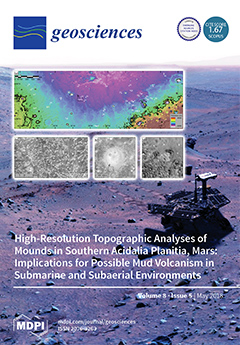1
Department of Geography, Universidade Estadual do Centro-Oeste (UNICENTRO), Irati, P.C. 84500-000 Paraná, Brazil
2
Instituto de Geomorfología y Suelos, Department of Geography, University of Málaga, 29071 Málaga, Spain
3
Department of Physical Geography, Trier University, 54286 Trier, Germany
4
Soil, Water and Land Use Team, Wageningen Environmental Research, Wageningen UR, 6708PB Wageningen, The Netherlands
5
Civil, Surveying and Environmental Engineering, The University of Newcastle, Callaghan 2308, Australia
6
Soil Erosion and Degradation Research Group (SEDER), Department of Geography, University of Valencia, 46010 Valencia, Spain
7
GeoEnvironmental Research Group, Department of Arts and Territory Sciences, University of Extremadura, 10071 Cáceres, Spain
Abstract
The faxinal management system is an endangered agro-silvopastoral system which forms part of the local traditional management in the Paraná federal state (Brazil). Significant changes in land management since the 1970s caused farmers to look for alternatives to increase the productivity of their
[...] Read more.
The faxinal management system is an endangered agro-silvopastoral system which forms part of the local traditional management in the Paraná federal state (Brazil). Significant changes in land management since the 1970s caused farmers to look for alternatives to increase the productivity of their farms. The introduction of new pasture species is causing land degradation problems, of which soil erosion is the most important challenge. Therefore, in this study, we assessed the environmental consequences of introducing exotic pasture species, such as
Brachiaria decumbens. To achieve this goal, ten erosion plots were installed with exotic and native pastures (
Paspalum notatum Flüggé) to quantify soil and water losses in paired plots. Total rainfall per event, soil properties (soil cover, texture, organic matter, bulk density, porosity, and soil penetration resistance), and pasture production were also estimated. Our results showed a decrease in organic matter and porosity and an increase of the bulk density in the exotic pasture plots. Soil erosion monitoring showed higher soil losses for the exotic cultivated plots (359.8 g m
−2 or 3.6 mg ha
−1) than for the native plots (90.7 g m
−2 or 0.91 mg ha
−1). The highest percentage of bare soil surfaces and compaction coincided with the highest soil erosion rates measured in the exotic pastures. However, the mean fodder production in the exotic plots was almost five times higher (987 kg DM ha
−1) than in the native ones (204 kg DM ha
−1). These findings confirm that farmers have an internal conflict. They want to optimize the production of fodder, but this leads to high soil erosion rates and reduces soil fertility in the medium- and long-term. The traditional, less productive pastoral system is more sustainable from an environmental and cultural point of view. However, this system may not be sustainable from an economic point of view.
Full article





